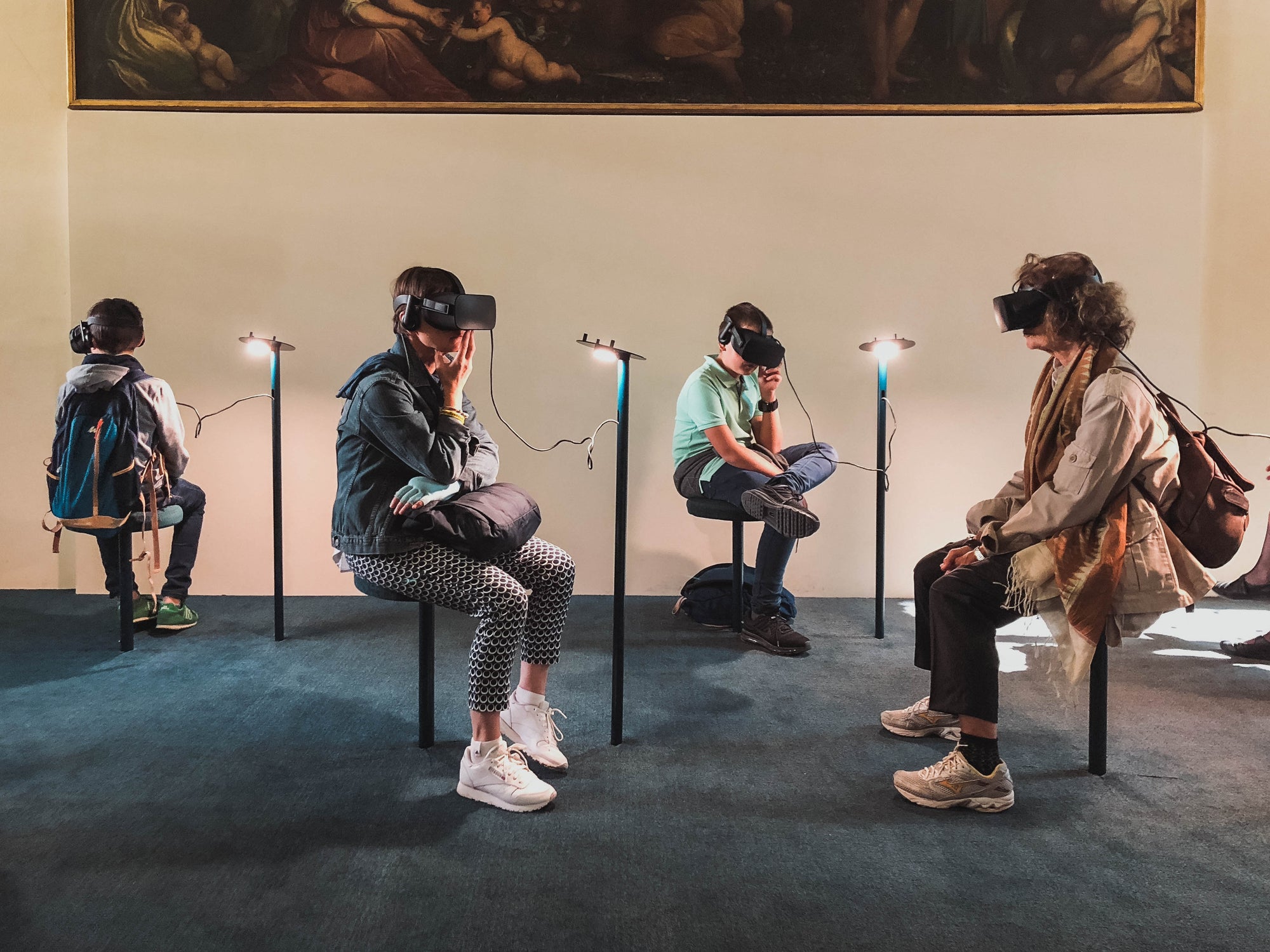Exploring the Synergy of Non-Profits and the Future: AI, Virtual Reality, XR, and Mixed Reality
•Posted on May 18 2023

Non-profit organizations play a crucial role in shaping a better world. We will delve into the potential of emerging technologies like Artificial Intelligence (AI), Virtual Reality (VR), Extended Reality (XR), and Mixed Reality (MR). By harnessing the power of these technologies, non-profits can enhance their outreach, impact, and effectiveness in creating positive change.
Artificial Intelligence (AI) and Non-Profits:
AI has the potential to revolutionize the way non-profits operate. With intelligent algorithms, non-profits can analyze vast amounts of data to identify trends, optimize resource allocation, and make informed decisions. AI-powered chatbots and virtual assistants can also enhance communication channels, providing personalized support and information to beneficiaries and supporters. Whether it's automating administrative tasks or predicting donor behavior, AI empowers non-profits to work smarter and achieve greater efficiency.
Virtual Reality (VR) for Non-Profits:
Virtual reality provides immersive experiences that can drive empathy and understanding. Non-profits can leverage VR to transport supporters to the frontlines of their cause, showcasing the urgency and importance of their work. VR also enables non-profits to engage donors through virtual fundraising events and create impactful storytelling campaigns, by effectively communicating their mission, showcasing the impact of their work, and cultivating a deeper connection between donors, volunteers, and beneficiaries fostering deeper connections and driving support. VR can be used to showcase the real-life challenges faced by marginalized communities, enabling supporters to gain a deeper understanding of the issues at hand. For example, non-profits working in the education sector can leverage VR to offer virtual field trips, allowing students to explore distant places and historical events, regardless of their physical location.
Extended Reality (XR): Bridging the Gap:
Extended reality (XR), which encompasses VR, augmented reality (AR), and mixed reality (MR), offers non-profits unique ways to connect with their audience. From interactive educational experiences to virtual tours, XR bridges the gap between the physical and digital realms. XR technologies enable non-profits to simulate real-world scenarios, providing practical training experiences without the associated risks or costs. Non-profits can utilize XR to educate their volunteers, staff, and beneficiaries, empowering them with the necessary skills and knowledge to drive meaningful change and create memorable experiences that inspire action.
Mixed Reality (MR) and Non-Profit Collaboration:
Mixed reality (MR) combines elements of both VR and AR, creating a hybrid environment where digital and physical objects coexist. With MR, non-profits can facilitate remote collaboration, enabling teams to work together seamlessly despite geographical barriers. Non-profit conferences and events can also be enhanced through MR, allowing participants to interact with virtual exhibits, attend virtual workshops, and network with like-minded individuals.
Leveraging Data and Insights:
With the integration of AI, VR, XR, and MR, non-profits can collect valuable data and gain actionable insights. By analyzing user behavior, engagement metrics, and preferences, organizations can optimize their campaigns, tailor their messaging, and enhance donor relationships. These technologies offer non-profits the ability to understand their audience on a deeper level, leading to more effective fundraising efforts and increased support.
Overcoming Challenges and Ensuring Ethical Use of Emerging Technologies:
While the potential of AI, VR, XR, and MR is vast, non-profits must also navigate challenges associated with their adoption. As non-profits venture into this exciting future, they must navigate ethical considerations, prioritize inclusivity, and forge strategic partnerships to maximize the impact of these technologies. Additionally, accessibility and inclusivity should be taken into account when implementing these technologies to avoid excluding individuals with disabilities or limited access to technology. Non-profits must prioritize data security, ensure inclusivity, and maintain transparency to build trust and mitigate potential risks associated with these technologies.
The future of non-profits is intricately tied to the transformative power of AI, VR, XR, and MR. These emerging technologies offer unprecedented opportunities for non-profit organizations to create impactful experiences, engage supporters, reach wider audiences and drive positive change. By harnessing the capabilities of AI, leveraging the immersive nature of VR, embracing the interactivity of XR, and embracing the collaborative potential of MR, non-profits can unlock new dimensions of creativity, empathy, and innovation, ushering in a future where technology serves as a powerful tool for social transformation, while elevating their mission and amplifying their impact on the world. As technology continues to evolve, non-profits must remain adaptive, exploring innovative ways to leverage these tools to create a brighter future for all. Together, let's harness the power of technology to shape a world where compassion and innovation go hand in hand.
FAQs:
- How can AI benefit non-profit organizations?
AI can benefit non-profit organizations by automating tasks, optimizing resource allocation, and providing data-driven insights for better decision-making.
- How does virtual reality help non-profits?
Virtual reality helps non-profits by creating immersive experiences that drive empathy, engagement, and support for their causes.
- What is XR, and how can it be used by non-profits?
XR, or extended reality, combines VR, AR, and MR to provide unique ways for non-profits to engage their audience, educate communities, and create memorable experiences.